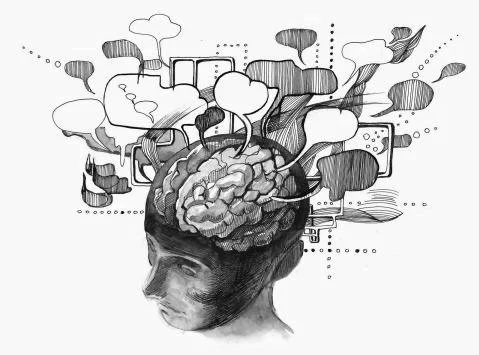Reclaiming the Body-Mind Connection
Ever felt like stress, anxiety, or a traumatic memory is somehow “stuck” in your body? You’re not alone. Studies show that our bodies store emotional experiences, often intensifying stress or unease when unresolved feelings linger.
Somatic Therapy—sometimes known as “somatic experiencing”—offers a unique way to process and release these embodied memories. Unlike traditional talk therapy, Somatic Therapy uses the body as a guide, helping people achieve emotional clarity by tapping into the nervous system, often when words alone aren’t enough.
For those in Toronto seeking transformative healing, Somatic Therapy provides an integrated approach that not only addresses past trauma but also nurtures a renewed connection with the body. This guide explores how Somatic Therapy works, its neurological foundations, and the types of issues it addresses, from PTSD to anxiety and depression.
What Is Somatic Therapy?
Somatic Therapy is a body-focused therapeutic approach that views the body as a repository of both conscious and unconscious experiences. Rather than just exploring thoughts and emotions, somatic experiencing integrates physical sensations, recognizing that memories—especially traumatic ones—are often stored in the body.
The Role of the Body in Mental and Emotional Experiences
When we experience stress or trauma, our body’s “fight, flight, or freeze” response is activated. Sometimes, these intense moments don’t fully resolve, leading to a kind of “emotional residue” that gets stored in muscles, tissues, and the nervous system. Somatic Therapy aims to access these embodied memories to release pent-up tension and restore balance.
How Memories and Experiences Get Stored in the Body
The body stores memories and experiences through procedural memory. I think of these as “imprints.”
Unlike our conscious, explcit memories, procedural memory, often referred to as “muscle memory,” is unconscious and implicit. Procedural memories are like a computer program that our nervous system creates. It takes the physical and emotional experiences and encodes them into a program that can be run on autopilot.
Riding a bike is a classic example of procedural memory. How to ride a bike isn’t stored in your “thinking mind”—it’s stored in your body.
In a similar way, core beliefs, painful emotional experiences, and traumas are encoded into procedural memory, often below our conscious awareness. Similar to riding a bike, the core belied “I’m not good enough” or the experience of being shamed isn’t stored in the “thinking mind”—it’s stored in the body.
How Somatic Therapy Works
The Body as an Access Route to Unconscious Memory
Our body serves as a powerful gateway to accessing unconscious memories. By observing bodily patterns like posture, gestures, and recurring physical sensations, we can gain insight into emotions and beliefs held at a deeper, unconscious level. These physical cues often reveal stories that our conscious mind might not easily access—such as a posture of shrinking that may reflect a long-held belief of inadequacy or gestures that subtly convey self-protection.
Somatic Therapy uses this awareness to “unpack” memories stored in the body, allowing us to connect present bodily sensations with past experiences. By working through these embodied memories, we can gradually release old patterns and make room for new ways of feeling and relating.
The Neuroscience Behind Somatic Therapy
Somatic Therapy is rooted in the science of how our bodies store and process emotional experiences through the nervous system. When we experience stress or trauma, the body often holds onto these memories in what scientists call somatic states—bodily sensations, postures, or tension patterns. This storage happens within what is known as the core response network, which includes the autonomic nervous system (ANS), the limbic system, the emotional motor system, and the reticular arousal system. Together, these systems help encode and recall emotional and sensory experiences, often without conscious awareness.
Somatic States and Memory Inscription
According to recent research, somatic states act like “markers” in the body that hold the emotional charge of past experiences. When stress or trauma occurs, the body may encode these experiences as muscle tension, postural shifts, or a heightened state of arousal. This is especially true if the experience was overwhelming, making it difficult for the conscious mind to process at the time. These somatic memories can be recalled subconsciously, influencing behavior and emotional responses.
By working with somatic states, Somatic Therapy aims to access these “implicit memories” and release their emotional hold.
Discharging Stress and Regulating the Nervous System
Somatic Therapy helps clients connect with these stored sensations, using techniques that support the discharge of somatic stress states—like tremors, shaking, or deep breathing—to release the held tension in a safe way. The autonomic nervous system plays a key role here, as it regulates our “fight, flight, or freeze” responses.
By releasing the stored physical tension, Somatic Therapy allows the ANS to recalibrate, helping individuals move from survival states to a sense of calm and safety.
Neuroplasticity and Emotional Resilience
Neuroplasticity, or the brain’s ability to reorganize itself, is essential to how Somatic Therapy promotes healing. Each time a client tunes into and works through a stored somatic state, new neural pathways are formed, allowing the brain to integrate a more regulated response pattern. This can ultimately reshape how we respond to stress, fostering resilience and emotional regulation. Over time, these therapeutic practices strengthen the core response network, enhancing the body’s capacity to process and release stress and creating lasting change in the nervous system.
Core Principles of Somatic Therapy
Awareness: Clients learn to tune into their bodily sensations, fostering an understanding of where certain feelings reside.
Mindfulness and Presence: Slow, intentional practices like deep breathing and grounding exercises help calm the nervous system, while mindfully moving through certain bodily reactions (such as a fight, flight or freeze response) can help them complete.
Release and Discharge: Techniques that release energy or tension are key. This can involve subtle movements, shaking, or even vocalizations.
Integration: After release, clients work to integrate these changes, often feeling a renewed sense of calm and clarity.
How Somatic Therapy Can Help with Trauma and Mental Health Conditions
Somatic Therapy and PTSD: In PTSD, the body often remains “stuck” in a hyper-alert state long after a traumatic event has ended. Somatic Therapy helps by slowing down the body’s response and teaching it to recognize safety cues. Somatic therapy, in combination with techniques like Deep Brain Reorienting and EMDR (Eye Movement Desensitization and Reprocessing) are often used to access deep-seated trauma and gradually recondition the nervous system to a baseline state.
Somatic Therapy and Anxiety: Anxiety, whether general or specific (like panic or phobias), often manifests physically—through a racing heart, shallow breathing, or tension in the muscles. Somatic Therapy focuses on helping clients build a tolerance to these sensations, using practices like breathwork to shift from a fight-or-flight state to a calm, grounded one. By attuning to the body’s responses, clients can learn to navigate anxiety before it escalates.
Somatic Therapy and Depression: Depression is often linked to hypoarousal—when the nervous system goes into a “shutdown” mode, leading to numbness or dissociation. By combining somatic therapy with techniques like Internal Family Systems or other body-based practices, clients learn to reconnect with their bodily sensations, re-establishing a sense of vitality. This re-engagement with the body can often alleviate the sense of isolation and emptiness common in depression.
Embracing Healing Through the Body
Somatic Therapy offers a profound way to heal by reconnecting with the wisdom stored in the body. By accessing somatic states and releasing stored stress, clients can reshape their nervous system’s responses, paving the way for lasting emotional resilience.
This therapy doesn’t just alleviate symptoms—it addresses deep-rooted patterns, helping individuals feel more grounded, present, and empowered. If you’re ready to move beyond old emotional cycles and experience a renewed sense of calm and connection, Somatic Therapy could be the first step on that transformative journey.
Looking for More?
If you’re interested in learning more about Mind-Body Therapy, we have lots of information to geek out on! You might enjoy:






